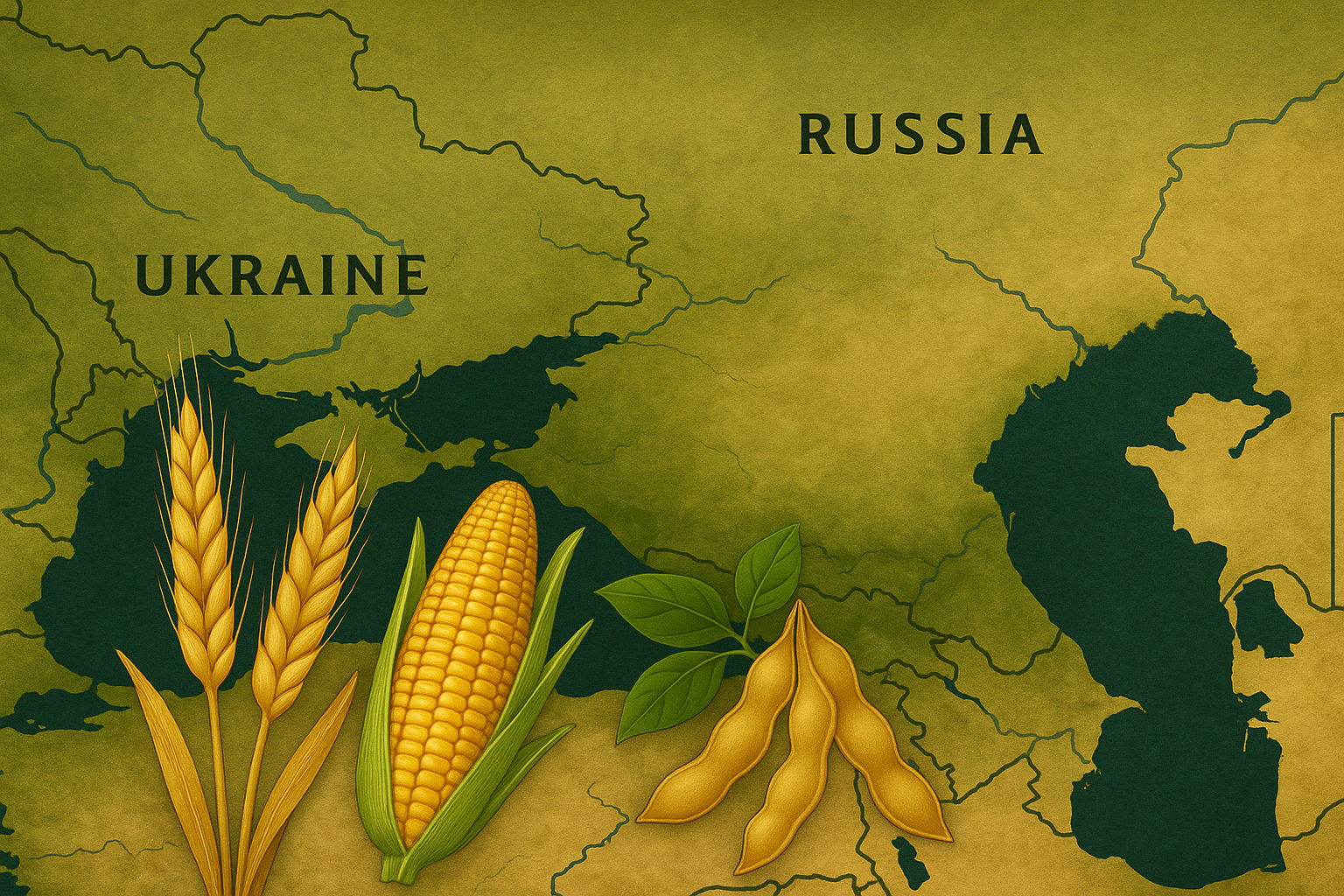Ukraine: Repositioning Amid Export Pressures and Strong Domestic Demand
Ukraine continues to play a central role in global grain exports, but recent weeks have highlighted a strategic redirection. While Ukraine's position as a top producer of wheat, corn, and barley remains strong, the domestic crush demand—especially for soybeans—has significantly increased, lowering the export share of total soy production to just 58%. This shift suggests that local processing facilities are absorbing more raw supply, signaling robust internal demand and strategic planning for value-added production.
Logistics inside Ukraine remain subdued, creating an opening for traders to bypass restrictive EU quotas by adjusting shipment routes. This has provided short-term relief and flexibility to exporters, particularly as the country prepares for the new crop season starting in July. Rapeseed markets are also showing bullish trends, with forward contracts climbing amid tight forward supply and a restrained selling attitude among farmers.
Soybean planting has surged and is now the second highest on record, underlining Ukraine’s ambition to expand both crushing capacity and export potential into Q4. However, sunflower sowing has lagged behind, largely due to cool spring weather, which has delayed plant development and placed critical importance on agrochemical application for the coming weeks.
Diversification in Trade: Ukraine Expands Beyond Europe
Ukraine is strategically diversifying its export portfolio. Vegetable oils and meals are increasingly being shipped to Asia and the Middle East, reducing dependency on the European market. Market analysts, including UkrAgroConsult, forecast a strong Q3 demand for oilseeds and by-products. This trend not only mitigates the risks of oversupply in traditional markets but also aligns with growing consumption in regions like the Gulf and Southeast Asia.
In a major strategic move, UAE-based agribusiness Al Dahra has partnered exclusively with Getreide AG Ukraine to source up to 150,000 tonnes of agricultural commodities, with potential expansion to over 500,000 tonnes. This alliance, ahead of Ukraine’s next harvest, ensures a direct pipeline of supply to the Middle East and Africa, boosting resilience in global food supply chains. Al Dahra’s operations across Romania, Serbia, and Egypt further solidify the Black Sea region’s role as a grain hub for global distribution.
Russia and Regional Pricing Dynamics
On the Russian side, SovEcon announced plans to eliminate the minimum export price by the end of the 2024/25 season. While the market impact of this move is yet to be fully realized, it represents a shift toward more liberalized grain pricing—potentially allowing Russian exporters to compete more aggressively in global tenders, particularly in Asia and North Africa.
In the meantime, market fundamentals remain mixed. Wheat prices are expected to stay under pressure leading up to harvest, although volatile weather patterns and reduced farmer selling may moderate the correction. Barley continues to enjoy solid export demand, which could offer near-term price support. Corn, however, is seeing decreased interest due to poor returns and heightened mycotoxin concerns, leading some farmers to reduce their acreage.
Freight, Weather, and Risk Factors
Freight markets remain calm, with ample vessel availability keeping shipping rates stable. This is a welcome relief to exporters navigating an environment of high fuel and insurance costs.
However, weather remains the most unpredictable and critical variable. Cool and delayed spring conditions are affecting sunflower development, and any move toward a dry summer could quickly alter the outlook for both corn and sunflowers across the region. Weather volatility will continue to be the key wildcard impacting both yields and market sentiment.

